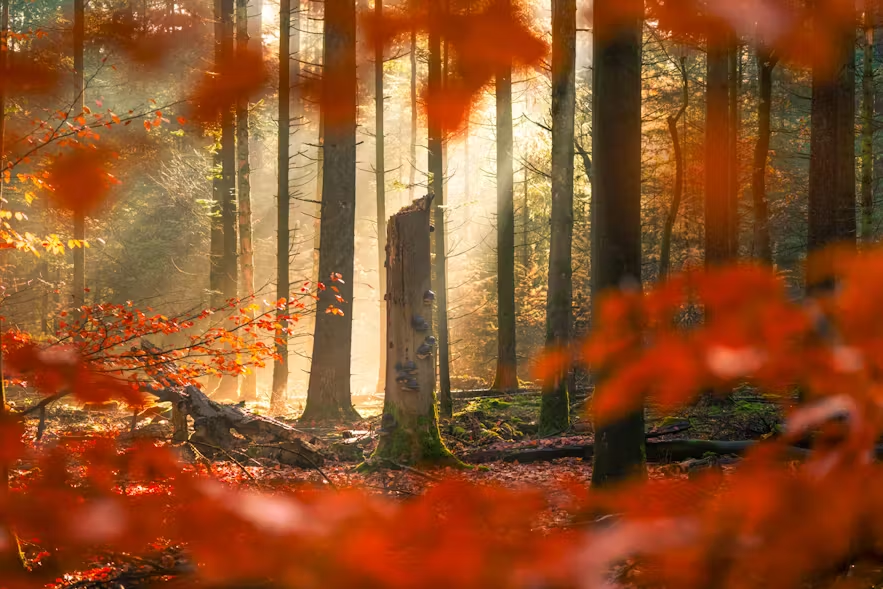
This photo has a “deep” depth of field. This DOF is focused in on the background with the closer object having a drastic blurred effect. Aperture: f/22

This photo has a “shallow” depth of field. The DOF has a blurred background because the lens is focused on the closer object. Aperture: f/2
Depth of field (DOF) is a key concept in photography, describing the range of distance within a photo that appears acceptably sharp. Essentially, it affects how much of your picture is in focus, from the foreground to the background. Whether I’m aiming to highlight a single subject or capture every detail of a vast landscape, understanding and controlling the depth of field is crucial.
The depth of field is directly influenced by the lens focal length. Wide-angle lenses tend to provide a deeper field, meaning more of the scene is in focus. This is ideal for landscape shots where clarity throughout the image is desired. On the flip side, telephoto lenses can give you a shallower DOF, which is perfect when I need to focus on an individual object, making it stand out with a blurred background. Macro lenses are for smaller objects up close showing more detail.
To adjust the depth of field, I play with the aperture settings on my camera – the diaphragm opening inside the lens. A larger aperture (a smaller f-number, like f/2.8) will yield a shallower depth of field, blurring the background and bringing attention to the focal point. When I need more of the scene in sharp focus, I choose a smaller aperture (a larger f-number, like f/16).
There’s an art to isolating subjects with depth of field that involves more than just aperture settings. I often use positioning and lens selection to frame my subject in new, creative ways. By moving closer to the subject or adjusting my angle slightly, I can change the background blur and how the subject fits within the space of the shot.
For beginners trying to navigate these settings, here’s my advice: start with your camera’s aperture priority mode to get a feel for how changes in aperture affect your images. Pay attention to the resulting depth of field as you adjust the settings. And remember, practice makes perfect – grab your camera and experiment with different subjects and environments to see how DOF plays a role in your compositions.
Depth of Field Techniques: From Smartphones to DSLRs

This picture of a super moon was taken off my phone. Not bad for a phone camera.
In conclusion, depth of field isn’t solely the realm of professional photographers or those with high-end DSLR, Digital Single-Lens Reflex cameras. From the smartphone in your pocket to the advanced equipment in a photographer’s bag, understanding and applying depth of field techniques can elevate the look of your photos exponentially. Adjusting the focus to play with background clarity, whether through zooming or editing, offers endless possibilities in creating powerful visual narratives.
To put it into practice, remember that a wider lens lets you capture broader scenes with everything in sharp focus. On the other hand, if the goal is to highlight a specific subject, adjusting the aperture to a smaller setting and zooming in can isolate your subject with crisp precision. Don’t be afraid to experiment with off-center lens positions to achieve unique perspectives or to use built-in smartphone features that emulate a shallow depth of field for that professional finish.
Editing isn’t cheating; it’s part of the process. Today’s technology allows even the most casual shutterbugs to manipulate depth of field after the shot. Whether you’re adjusting the blur on a phone’s portrait mode or using software to fine-tune the focus area, these adjustments can dramatically shift the viewer’s focus and alter the overall impact of the photograph.
Remember, the key to mastering depth of field is understanding the interplay between your lens choice, aperture, and zoom—and, most importantly, allowing yourself the freedom to try new settings and techniques. Every photo tells a story, and how you manipulate depth of field can change how that story is perceived and felt.
So, here’s to you and the beautiful images you’ll create. May your photos be as deep and rich as the moments they capture and may your journey into the art of photography continue to bring you joy and inspiration.
